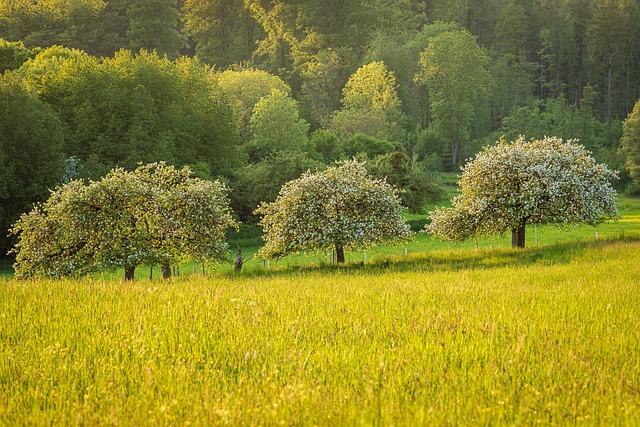Introduction:
Trees play a crucial role in not only the environment but also in affecting the way sound travels and is absorbed in various settings. Research has shown that trees have the ability to attenuate sound through absorption by their vegetation. The sound absorption coefficient of trees, expressed as α=G·f^1/2, highlights the relationship between frequency and the constant G in this process [1]. Furthermore, the leaves of different tree species have been studied to understand their sound absorption properties, shedding light on the impact of specimen size and layer thickness on this phenomenon [3]. In addition, factors such as spreading losses, atmospheric absorption, and barriers also play a role in sound propagation in the atmosphere, further emphasizing the intricate relationship between trees and sound absorption [2]. This article aims to explore the fascinating connection between trees and sound absorption, delving into the science behind how trees influence the way we perceive and experience sound in our surroundings.
Trees and Sound Absorption
When considering the benefits of trees as sound absorbers, it’s essential to understand the factors that affect their sound absorption capacities. Studies have shown that the thickness, age, and roughness of tree bark play significant roles in determining a tree’s ability to absorb sound effectively [3]. Conifers, in particular, have been found to absorb sound better than broadleaved species, making them a favorable choice for sound reduction purposes [1].
When looking for trees with high sound absorption qualities, pine trees, in particular, have been identified as excellent sound absorbers. By utilizing forest by-products such as pine bark panels or wood chips with sawdust, one can enhance sound absorption capabilities effectively [2]. Strategic planting of these trees in areas where sound reduction is needed can significantly contribute to minimizing noise pollution and creating a more peaceful environment for both humans and wildlife.
Q&A
Q: What is the relationship between trees and sound absorption?
A: Research has shown that trees play a significant role in sound absorption. Trees can act as natural sound barriers, absorbing and deflecting sound waves, thereby reducing noise pollution in urban and residential areas. The foliage, branches, and bark of trees all contribute to this process by absorbing and scattering sound waves [2].
Q: How do trees impact sound levels in different environments?
A: The presence of trees in various environments can have a measurable impact on sound levels. For instance, in urban settings, trees can help lower the noise levels from traffic and other urban activities. In residential areas, strategically planting trees can create a quieter and more peaceful environment by reducing noise pollution [2].
Q: Can you provide examples of specific tree species that are known for their sound absorption properties?
A: Certain tree species are particularly known for their sound absorption properties. For example, evergreen trees such as spruce and pine have dense foliage that can effectively absorb sound waves. Trees with broad, thick leaves, such as oak and maple, also excel at sound absorption. Additionally, trees with extensive branches and rough bark, like the London plane tree, can further enhance sound absorption [3].
Q: What are some practical tips for utilizing trees for sound absorption in a residential setting?
A: In a residential setting, homeowners can strategically plant trees to maximize sound absorption benefits. Placing trees along property boundaries or near noise sources, such as roads or neighbors, can help reduce sound transmission into the home. Choosing tree species with dense foliage and thick bark will enhance sound absorption capabilities. Additionally, creating a green buffer zone with a variety of tree species can provide greater overall sound absorption benefits [3].
Conclusion
the research on trees and their role in sound absorption is shedding light on the benefits they bring to reducing noise pollution in urban environments. Studies have shown that trees like the larch and conifers are particularly effective in absorbing noise, with their bark playing a significant role in this process [1] [2]. Additionally, foliage such as grass and leaves also contribute to sound absorption, especially at higher frequencies [3]. The presence of trees and greenery not only adds aesthetic value to urban areas but also serves as natural sound barriers, enhancing the overall quality of life for residents. As we continue to understand and appreciate the benefits of trees in mitigating noise pollution, incorporating more green spaces into our cities can lead to a quieter and more harmonious urban environment for all to enjoy.
Simpsons Tree Services, Servicing Melbourne’s North Eastern Suburbs
Book a quote online at www.simpsonstrees.com.au




